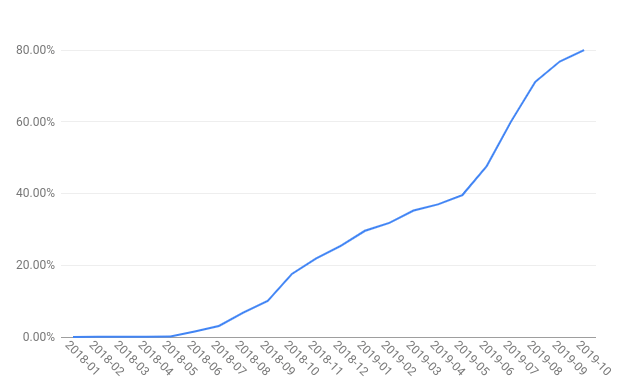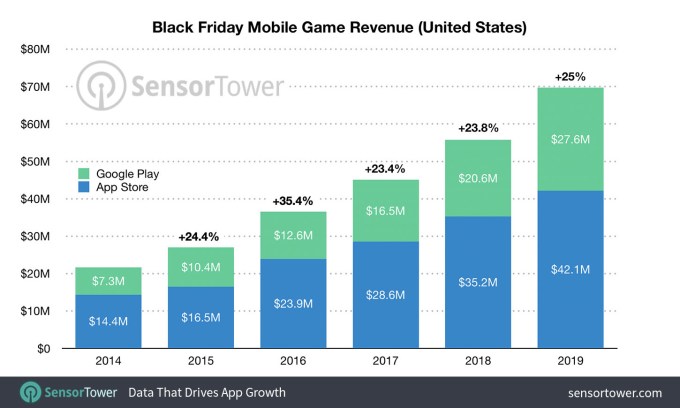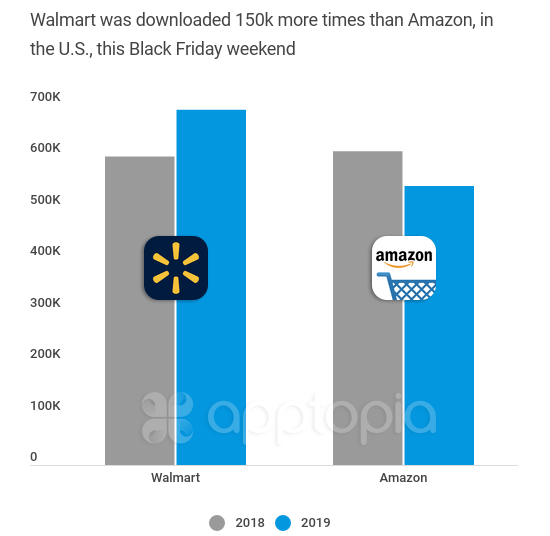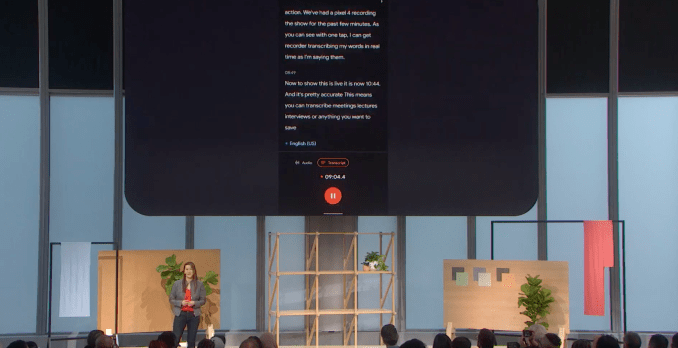Welcome back to This Week in Apps, the Extra Crunch series that recaps the latest OS news, the applications they support and the money that flows through it all. What are developers talking about? What do app publishers and marketers need to know? How are politics impacting the App Store and app businesses? And which apps are everyone using?
This week we look at how the Black Friday weekend played out on mobile (including which non-shopping category that saw a boost in revenue!), as well as a few security-related stories, TikTok’s latest bad press, plus Apple and Google’s best and most downloaded apps of 2019, and more.
Headlines
80% of Android apps are encrypting traffic by default
 Google gave an update on Android security this week, noting that 80% of Android applications were encrypting traffic by default, and that percentage was higher for apps targeting Android 9 or higher, with 90% of them encrypting traffic by default. Android protects the traffic entering or leaving the devices with TLS (Transport Layer Security). Its new statistics are related to Android 7’s introduction of the Network Security Configuration in 2016, which allows app developers to configure the network security policy for their app through a declarative configuration file. Apps targeting Android 9 (API level 28) or higher automatically have a policy set by default that prevents unencrypted traffic for every domain. And since Nov. 1, 2019, all apps (including app updates) must target at least Android 9, Google says. That means the percentages will improve as more apps roll out their next updates.
Google gave an update on Android security this week, noting that 80% of Android applications were encrypting traffic by default, and that percentage was higher for apps targeting Android 9 or higher, with 90% of them encrypting traffic by default. Android protects the traffic entering or leaving the devices with TLS (Transport Layer Security). Its new statistics are related to Android 7’s introduction of the Network Security Configuration in 2016, which allows app developers to configure the network security policy for their app through a declarative configuration file. Apps targeting Android 9 (API level 28) or higher automatically have a policy set by default that prevents unencrypted traffic for every domain. And since Nov. 1, 2019, all apps (including app updates) must target at least Android 9, Google says. That means the percentages will improve as more apps roll out their next updates.
 Black Friday boosted mobile game revenue to a record $70M
Black Friday boosted mobile game revenue to a record $70M
U.S. sales holiday Black Friday wasn’t just good for online shoppers, who spent a record $7.4 billion in sales, $2.9 billion from smartphones. It also boosted iOS and Android mobile game revenue to a single-day record of $69.7 million in the U.S., according to Sensor Tower. This was the most revenue ever generated in a single day for the category, and it represents a 25% increase over 2018. Marvel Contest of Champions from Kabam led the day with approximately $2.7 million in player spending. Two titles from Playrix — Gardenscapes and Homescapes — also won big, with $1 million and $969,000 in revenue, respectively.
These increases indicate that consumers are looking for all kinds of deals on Black Friday, not just those related to holiday gift-giving. They’re also happy to spend on themselves in games. Mobile publishers caught on to this trend and offered special in-game deals on Black Friday which really paid off.
Did Walmart beat Amazon’s app on Black Friday?
 Sensor Tower and Apptopia said it did. App Annie also said it did, but then later took it back (see update). In any event, it must have been a close race. According to Sensor Tower, Walmart’s app reached No.1 on the U.S. App Store on Black Friday with 113,000 new downloads, a year-over-year increase of 23%. Amazon had 102,000 downloads, making it No. 2.
Sensor Tower and Apptopia said it did. App Annie also said it did, but then later took it back (see update). In any event, it must have been a close race. According to Sensor Tower, Walmart’s app reached No.1 on the U.S. App Store on Black Friday with 113,000 new downloads, a year-over-year increase of 23%. Amazon had 102,000 downloads, making it No. 2.
Arguably, many Amazon shoppers already have the app installed, so this is more about Walmart’s e-commerce growth more so than some ding on Amazon.
In fact, Apptopia said that Amazon still had 162% more mobile sessions over the full holiday weekend — meaning Amazon was more shopped than Walmart.
More broadly, mobile shopping is still huge on Black Friday. The top 10 shopping apps grew their new installs by 11% over last year on Black Friday, to reach a combined 527,000 installs.
Report: Android Advanced Protection Program could prevent sideloading
Google’s Advanced Protection Program protects the accounts of those at risks of targeted attacks — like journalists, activists, business leaders, and political campaign teams. This week, 9to5Google found the program may get a new protection feature with the ability to block sideloading of apps, according to an APK breakdown. What’s not yet clear is if program members will have the option to disable the protection, but there are some indications that may be the case. Another feature the report uncovered appears to show that Play Protect will automatically scan all apps, including those from outside the Play Store. This won’t affect the majority of Android users, of course, but it is an indication of where Google believes security risks may be found: sideloaded apps.
